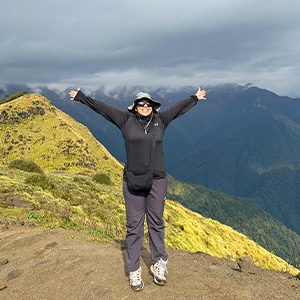Overview of the Lemosho Route
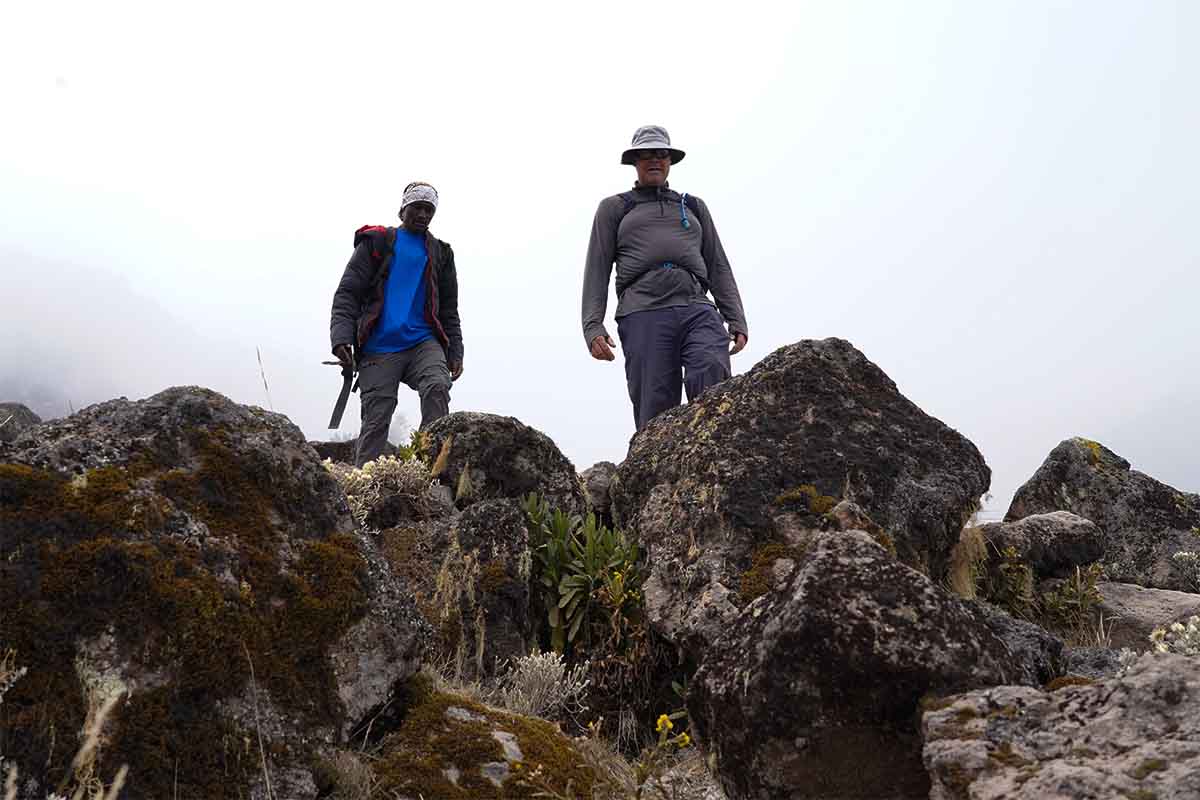
Distance: Approximately 70 km (43.5 miles)
Duration: 7-8 trekking days
Starting Point: Londorossi Gate
Ending Point: Mweka Gate
Difficulty Level: Moderate to Challenging
Scenery: Diverse and stunning, ranging from rainforest to alpine desert
Highlights of Kilimanjaro Climbing via Lemosho Route
- The Kilimanjaro Lemosho Route offers a variety of landscapes for trekkers while experiencing different habitats in the rainforests, moorland, alpine desserts.
- Lemosho Route is the western approach through the rainforest that increases the chance of encountering wildlifes including elephants, buffaloes, and colobus monkeys.
- Comparatively, the Lemosho Route to Kilimanjaro is less crowded, especially at the starting points providing a peaceful and tranquil trekking experience.
- The longer duration of the Lemosho Route (7-8 days) allows you to gradually ascent with proper acclimatization days. Acclimatization also helps to reduce the risk of Altitude Sickness.
- Due to the longer acclimatization period and gradual ascent, the Lemosho Route boasts a high success rate for reaching the summit.
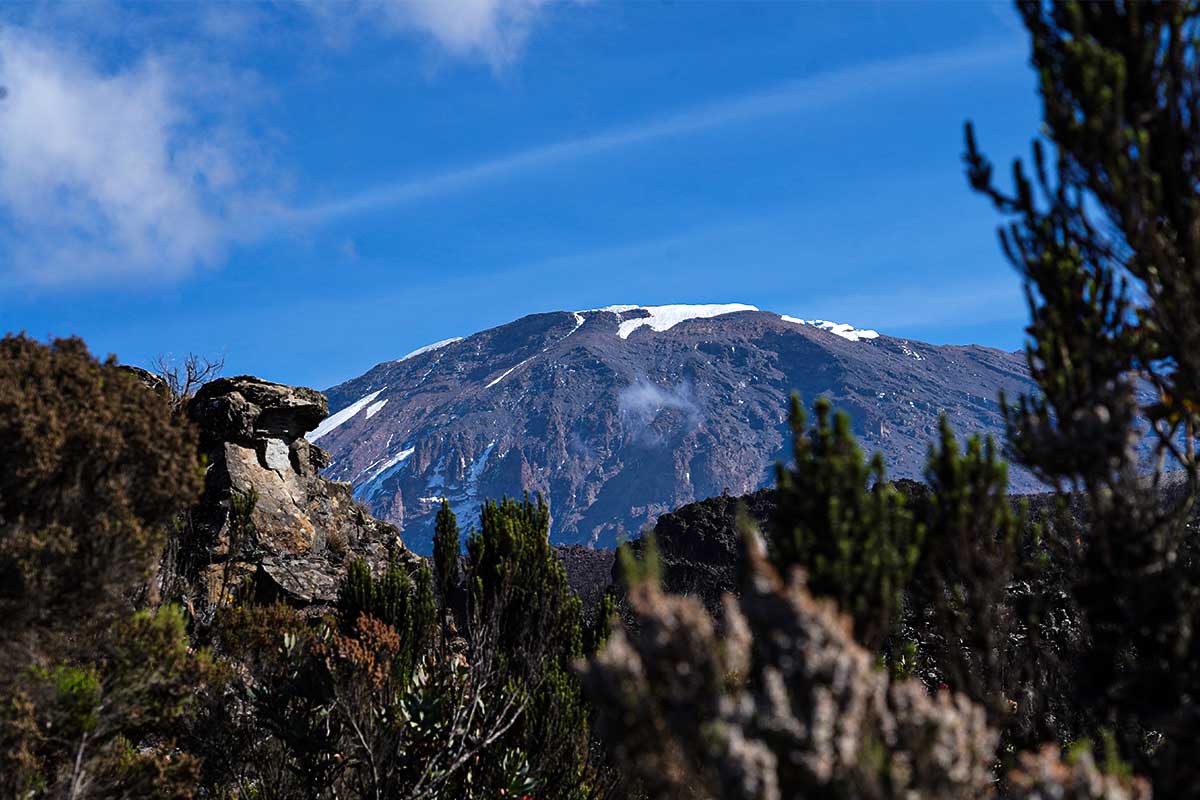
How Long Does It Take to Climb Mount Kilimanjaro via Lemosho Route?
The Kilimanjaro Climb via Lemosho generally takes you around 7 to 8 trekking of days. This route to Kilimanjaro allows you for better acclimatization in higher altitude and increases the chance for a successful summit.
Here is a breakdown of the Itinerary for Kilimanjaro via Lemosho Route:
Popular Itinerary for Kilimanjaro Climbing Via Lemosho Route
Day 1: Arrival in Kilimanjaro International Airport. Drive to Moshi
Elevation: 950 meters
Distance: 41 km (25.4 miles)
Habitat: Urban
Day 2: Drive to Londorossi Gate and Trek to Forest Camp
Elevation: 2,100 meters to 2,780 meters
Distance: 6 km (3.7 miles)
Hiking Time: 3-4 hours
Habitat: Rainforest
Day 2: Trek from Forest Camp to Shira 1 Camp
Elevation: 2,780 meters to 3,500 meters
Distance: 8 km (5 miles)
Hiking Time: 5-6 hours
Habitat: Moorland
Day 3: Trek from Shira 1 Camp to Shira 2 Camp to Moir Hut
Elevation: 3,500 meters to 3,850 meters
Distance: 7 km (4.3 miles)
Hiking Time: 3-4 hours
Habitat: Moorland
Day 4: Trek to Barranco Camp via Lava Tower
Elevation: 3,850 meters to 4,600 meters to 3,900 meters
Distance: 10 km (6.2 miles)
Hiking Time: 7-8 hours
Habitat: Alpine Desert
Day 5: Barranco Camp to Karanga Camp
Elevation: 3,900 meters to 4,200 meters
Distance: 5 km (3.1 miles)
Hiking Time: 4-5 hours
Habitat: Alpine Desert
Day 6: Karanga Camp to Barafu Camp
Elevation: 4,200 meters to 4,640 meters
Distance: 4 km (2.5 miles)
Hiking Time: 3-4 hours
Habitat: Alpine Desert
Day 7: Summit Push Day from Barafu Camp to Uhuru Peak to Mweka Camp
Elevation: 5,895 meters (Uhuru Peak) to 3,100 meters (Mweka Camp)
Distance: 17 km (10.5 miles)
Hiking Time: 12-15 hours
Habitat: Arctic Zone, Alpine Desert, Rainforest
Day 8: Mweka Camp to Mweka Gate
Elevation: 3,100 meters to 1,640 meters
Distance: 10 km (6.2 miles)
Hiking Time: 3-4 hours
Habitat: Rainforest
When is the Best Time to Climb Kilimanjaro via the Lemosho Route?
The best time to climb Kilimanjaro via the Lemosho Route is during the dry seasons: late June to October and late December to February. This time of the year in Tanzania offers vibrant and clear skies with stable weather and moderate temperatures which makes it more comfortable and enjoyable for trekking. The dry trails and favorable climate enhances the overall experience of the trek.
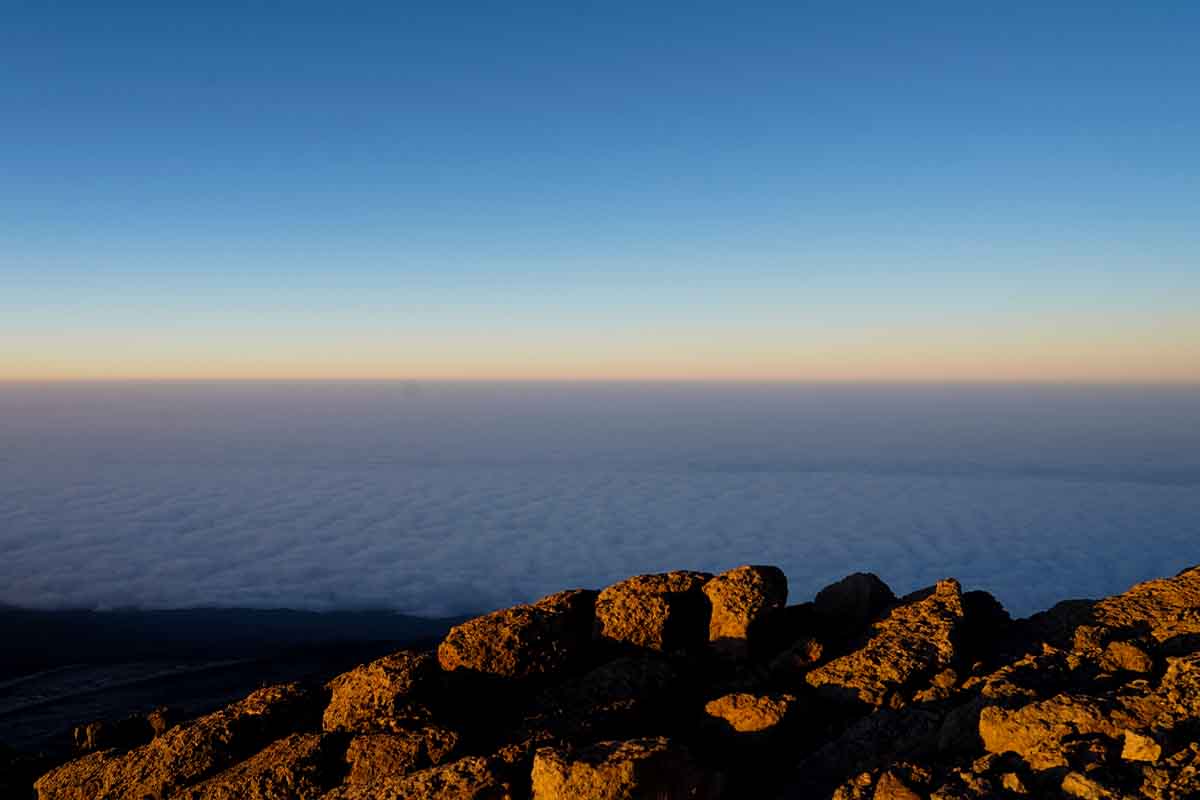
Whereas, the wet seasons (March to May) and in November, present a more difficult trekking experience with heavy rainfall, muddy trails, and slippery paths. It is generally not recommended to undertake the Kilimanjaro Climbing .
Difficulty Level and Physical Fitness Requirements
The Lemosho Route is moderate to highly challenging, requiring a strong physical fitness due to its duration, altitude, and varied terrain. While technical climbing skills aren't important, trekkers need strong cardiovascular endurance to climb Kilimanjaro. Exercises like running, cycling, swimming and strength training focusing the legs are very important for handling the steep and rocky trails in the Lemosho Route.
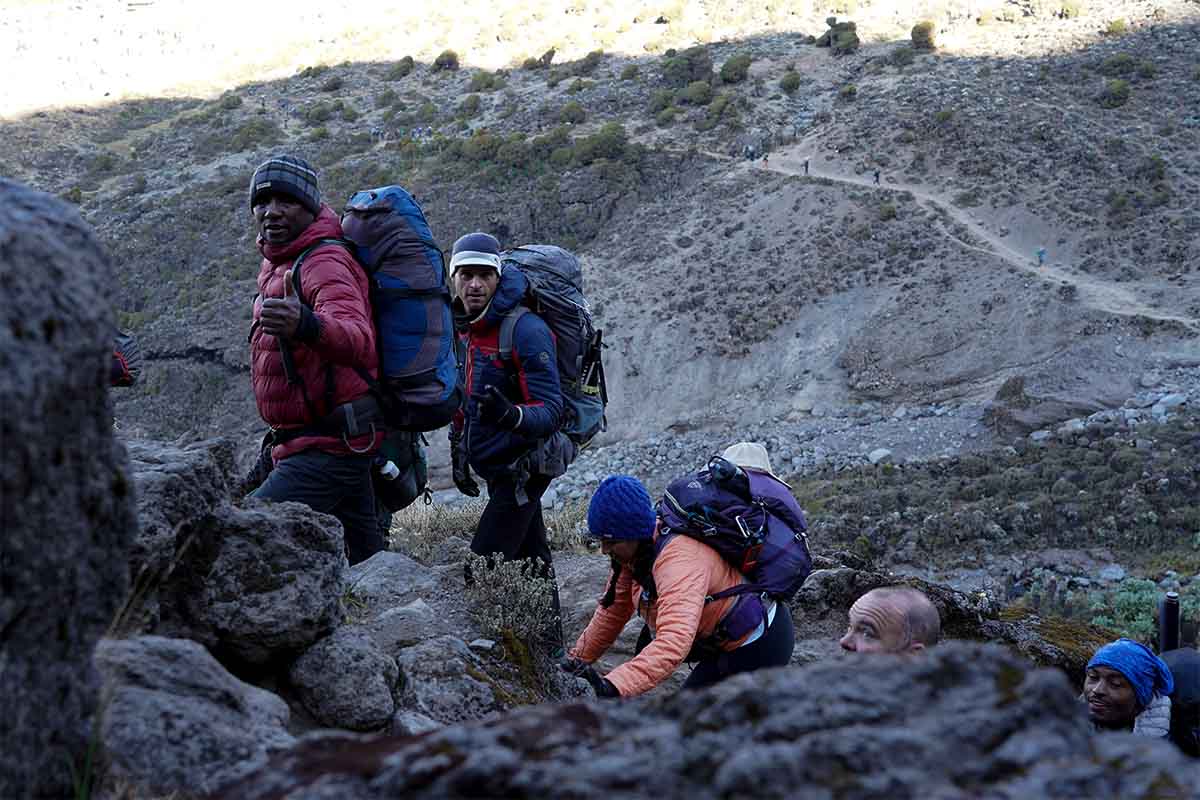
Practice walking with a backpack to simulate trekking conditions, along with flexibility. Mental resilience is also very important due to long days and high altitude. Proper preparation, including hydration, balanced diet, and doctor's consultation will enhance the chances of a successful and rewarding climb on the Lemosho Route.
Key Landmarks of the Lemosho Route to Kilimanjaro
Moshi
Moshi, the capital of Kilimanjaro region is the second largest tourism hub in Tanzania. Eventhough Moshi is often viewed as a tourism destination, those who are interested in knowing more about the Swahili Culture should consider visiting Moshi. It is a low-key place with an appealing blend of African and Asian influence and a self-sufficient, prosperous feel, due in large part to it being the center of Tanzania.
Even inside Moshi City, Mt. Kilimanjaro is the main attraction you will probably be continually grazing that is worth trying to catch.
Londorossi Gate
Londorossi Gate marks the starting point of the Lemosho Route. Situated at an elevation of 2,100 meters (6,890 feet), it is the entrance to the western side of Kilimanjaro. Here, climbers have to register and undergo mandatory equipment checks. The gate is surrounded by luscious forest, teeming with wildlife, setting the stage for the adventure ahead.
Forest Camp/ Mti Mkubwa (Big Tree Camp)
After leaving Londorossi Gate, climbers ascend their way to Forest Camp, also known as Big Tree Camp. This campsite is situated within the dense rainforest at an elevation of 2,780 meters (9,121 feet). Mti Mkubwa is the very first campsite you reach immediately after you enter the Kilimanjaro National Park and also the first accommodation area you reach for your accommodation of the Mount Kilimanjaro Climb via Lemosho Route.
The forest campsite is rich in biodiversity, home to a variety of birds, monkeys, and lush vegetation. The serene environment of Forest Camp provides a peaceful night’s rest under a canopy of towering trees.
Shira Plateau
Emerging from the forest, trekkers enter the Shira Plateau, one of the most stunning features of the Lemosho Route. This high-altitude plateau, sitting at around 3,500 meters (11,485 feet), offers expansive views of the mountain and the surrounding landscapes. The terrain here is characterized by heather and moorland, with dramatic views of Mount Meru in the distance. Shira 1 Camp and Shira 2 Camp are located on this plateau, providing spectacular sunset and sunrise vistas.
Moir Hut
Moir Hut is an old rundown and ruined pyramid shaped wooden hut situated along the Shira Plateau. Moir Hut used to be one of the pioneer camps set up on route of Mount Kilimanjaro to accommodate climbers but is no longer in service nowadays. Moir camp is a scenic and quiet campsite on Mt Kilimanjaro hidden in a valley surrounded by steep slopes and hills known as the lent hills, which are usually used as the acclimatization hike destination especially when using the Lemosho Route to Kilimanjaro. An acclimatization hike on the Lent Mills will have you gain up to 4,700 m in elevation.
Lava Tower
The Lava Tower is a significant acclimatization point on the Lemosho Route. Standing at an elevation of 4,640 meters, this towering rock formation is believed to be an ancient result of a volcanic vent. It appears to have occurred when the molten lava had emerged from a vent in the ground, then cooled and hardened, eventually blocking up the vent and leaving behind a steep tower like structure.
Lava Tower acts as a lunch stop before descending to Barranco Camp which can help trekkers to adjust to the altitude slowly.
Barranco Wall
The Barranco Wall, popularly known as the “Breakfast Wall,” is a steep, 257 meter rock face that climbers must scale. Barranco Camp, is an accommodation campsite used by climbers scaling Mount Kilimanjaro to rest and spend the night on the Machame, Umbwe, Shira, and Lemosho routes in an attempt to reach the summit.
Although the whole Kilimanjaro Climb is non-technical, you might need some scrambling to climb up till the Barranco Wall. The ascent will reward you with some beautiful views of the Karanga Valley below you. The top of the Barranco Wall is a perfect spot for photos and a sense of accomplishment. There are no hotels or cottages at Barranco Camp, therefore all climbers must bring their own tents. Tents are commonly carried by potters.
However, the descent does not pass by Barranco campground since it takes a completely different route.
Karanga Valley
The Karanga Camp, named after the Karanga Valley (4,200 meters) which cuts through Kilimanjaro National Park, serves as an accommodation point for climbers ascending Mount Kilimanjaro via the Lemosho, Shira, Umbwe, and Machame routes. Karanga Valley camp is generally used as a lunch stop or an overnight stay depending on the itinerary chosen.
Regardless of any route chosen, they all pass through the Karanga Valley. This valley is a mixed habitat of alpine desert and hardy vegetation with amazing views of the southern glaciers of Mount Kilimanjaro.
Hotel accommodations are not available at Karanga Camp, therefore you have to set up your tent. In that case, we offer our own tents for our clients which will be carried by the porter.
The only amenities at the Karanga Huts campsite are pit latrines, often known as dry toilets, and a wooden house that acts as the Rangers cabin on the campsite's western side, near the Karanga Valley.
Barafu Camp
Barafu Camp, at an elevation of 4,640 meters (15,223 feet), is the final camp before the summit push. The term ‘Barafu’ means ‘Ice’ in Swahili language, which reflects the cold and difficult environment of this camp. The Barafu hut campsite is one of the last camps you come across before summiting Mount Kilimanjaro. This campsite is an overnight rest stop on the south-eastern side, at the base of Kibo.
This campsite, like the others near the top of Mount Kilimanjaro, lacks any basic infrastructure save for a ranger's hut and a few dry toilets in the shape of pit latrines, some of which are located close on the ridge's edge. As this campsite includes a lot of large rocks and restrooms, it would be very tough to find a nice location to set up your tent due to excessive traffic.
Stella Point
Among the three designated summit points of Mount Kilimanjaro are Stella Point, Gilman's Point, and Uhuru Peak, the highest and primary summit point respectively. Stella Point was named after Estella Latham, the first woman to reach there. Stella Point is located at an height of 5,756 m above sea level and on the rim of a crater to the south of Uhuru Peak. Stella Point is the end point of the Barafu Hut path, beginning from Barafu and up Kibo all the way, which covers screws along its route.
.jpg)
A climber ascending Mount Kilimanjaro will also come upon firm terrain here for the first time after departing from Barafu Hut Campsite. The land at Stella Point is likewise quite level and devoid of gravel and scree.
Climbers using the Lemosho, Machame, or Shira Routes will approach Stella Point from Barafu Camp while trekkers using Marangu and Rongai Routes on the mountain will travel from Kibo Huts Camp to Gilman's Point.
Uhuru Peak- Mount Kilimanjaro Summit
The highest point in Mount Kilimanjaro is the summit of Uhuru Peak- Africa's highest peak at 5,895 meters (19,341 feet). Reaching the summit is the ultimate goal of the climb, offering an extreme sense of accomplishment.
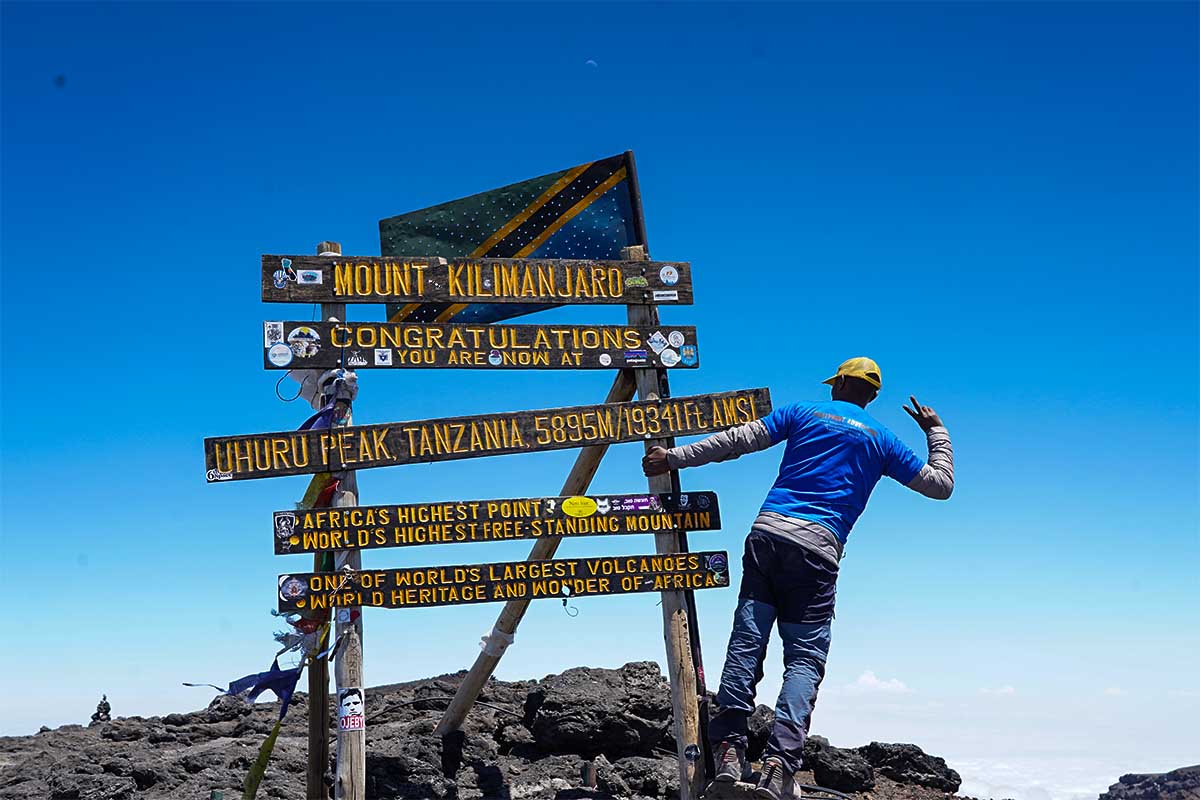
There is a signboard marking the peak, for climbers to take their pictures to remember the day. The sight from Uhuru Peak is simply breathtaking: glaciers, the crater and wide African plains stretch out beneath your feet.
Mweka Camp and Mweka Gate
As you descend from the summit towards Mweka Camp at 3,100 meters (10,170 feet), the contrast between this camp in the rainforest and what you have just left behind on Mount Kilimanjaro could not be more extreme. The next day climbers descend to the Mweka Gate at 1,640 meters. The rainforest is a resplendent green, and full of life to a level far different from its arid higher altitudes. At Mweka Gate all climbers receive their certificates and from there celebrate their success having stood at the summit of Kilimanjaro.
What to Expect on the Lemosho Route to Kilimanjaro?
Diverse Landscapes and Scenery
The Lemosho Route to Kilimanjaro is renowned for its diverse landscapes and stunning scenery. From the luxurious rainforest of the Londorossi Gate all the way to the blossoming moorland, you will have both lush flora and fauna,including monkeys and birds.
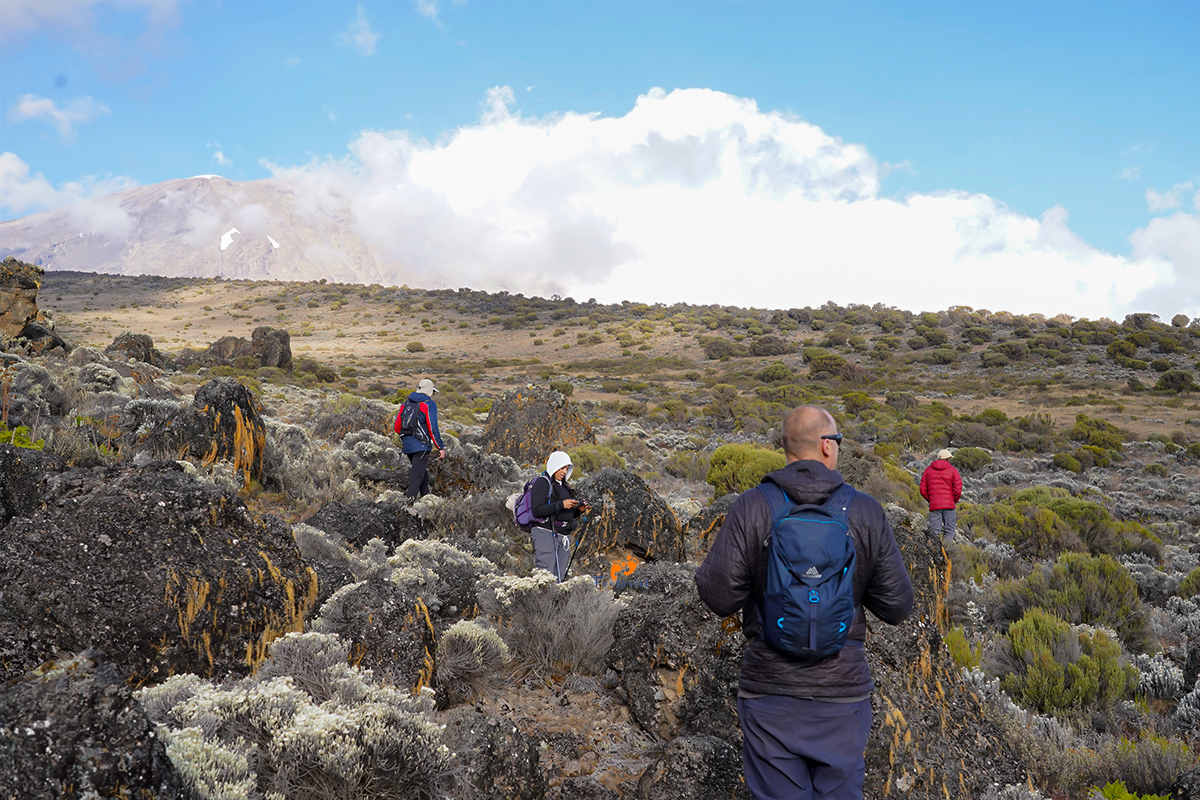
As you ascend, the forest gives way to the moorland, characterized by heather and shrubbery, offering beautiful views of the mountain and the Shira Plateau. Higher up from the Lemosho Route, the landscape then changes into the alpine desert, with low vegetation and rugged terrain. The final push to the summit takes you through the arctic zone, where snow and ice dominate the scene, culminating in the breathtaking vistas from Uhuru Peak.
Challenging Trails and Varying Terrain
The Lemosho Route trail varies remarkably, providing the best views with equal difficulty level. The starting days of the climb involves trekking through dense forests with muddy and sometimes slippery trails.
As you climb higher into the moorland, the trails become steep and more uneven. The ascent to the Shira Plateau is somewhat gentle. The other days involve difficult and steeper climbs, especially at the Barranco Wall, which requires some scrambling.
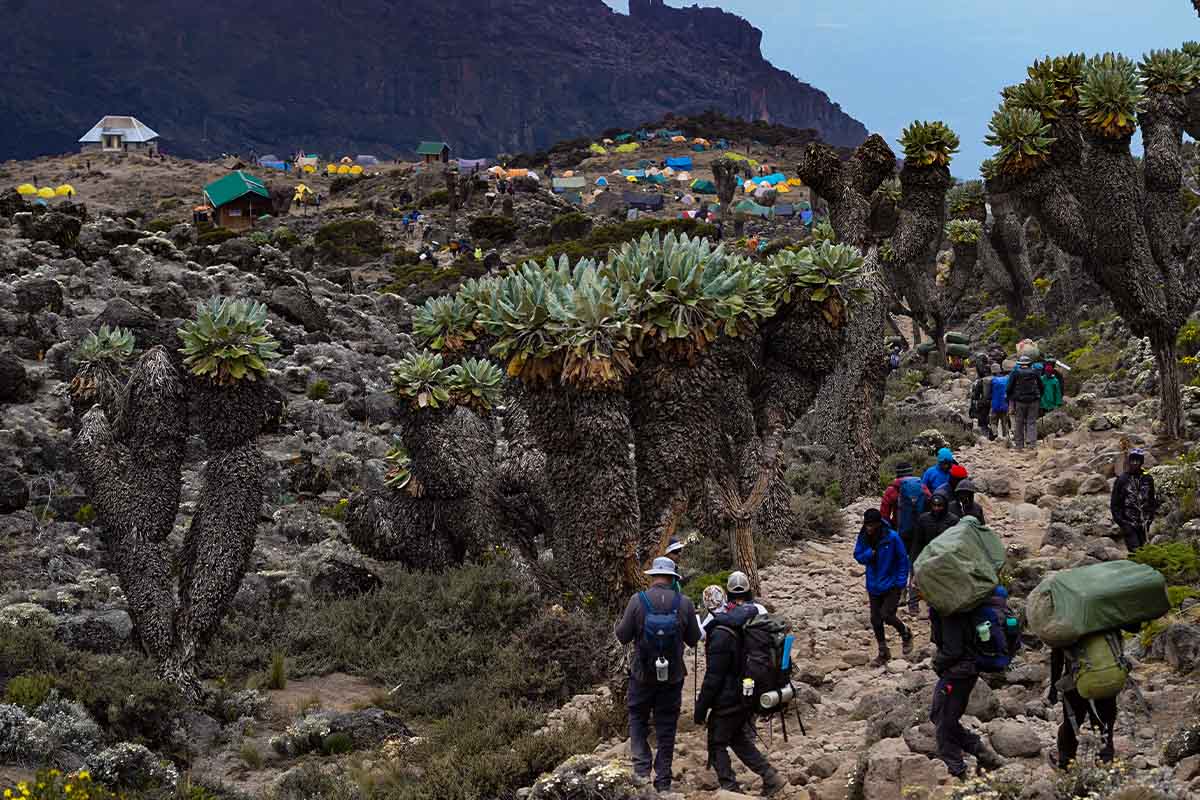
The Final ascent to Uhuru Peak is relatively strenuous and steep climb over screen and rocky terrain. The descent follows a different path, which can be equally demanding on tired legs.
Physical Demands and Altitude Challenges
Climbing Kilimanjaro via the Lemosho Route is physically challenging. Trekkers should be mentally prepared for 7-8 days of walking, around 6-7 hours per day with significant elevation gains.
The highest point, Uhuru Peak, stands at 5,895 meters (19,341 feet), posing a risk of altitude sickness. Acclimatization is very important, and the longer itinerary of the Lemosho Route is specially tailored to allow a gradual ascent with acclimatization points for climbers to adjust the altitude.
Team Support
A professional team of guides and porters will be joining you throughout the trek to Mt Kilimanjaro. The local guides are experienced in providing information, and help you in every situation. The porters carry most of the great, which allows you to hike with a lighter backpack and enjoy the view.
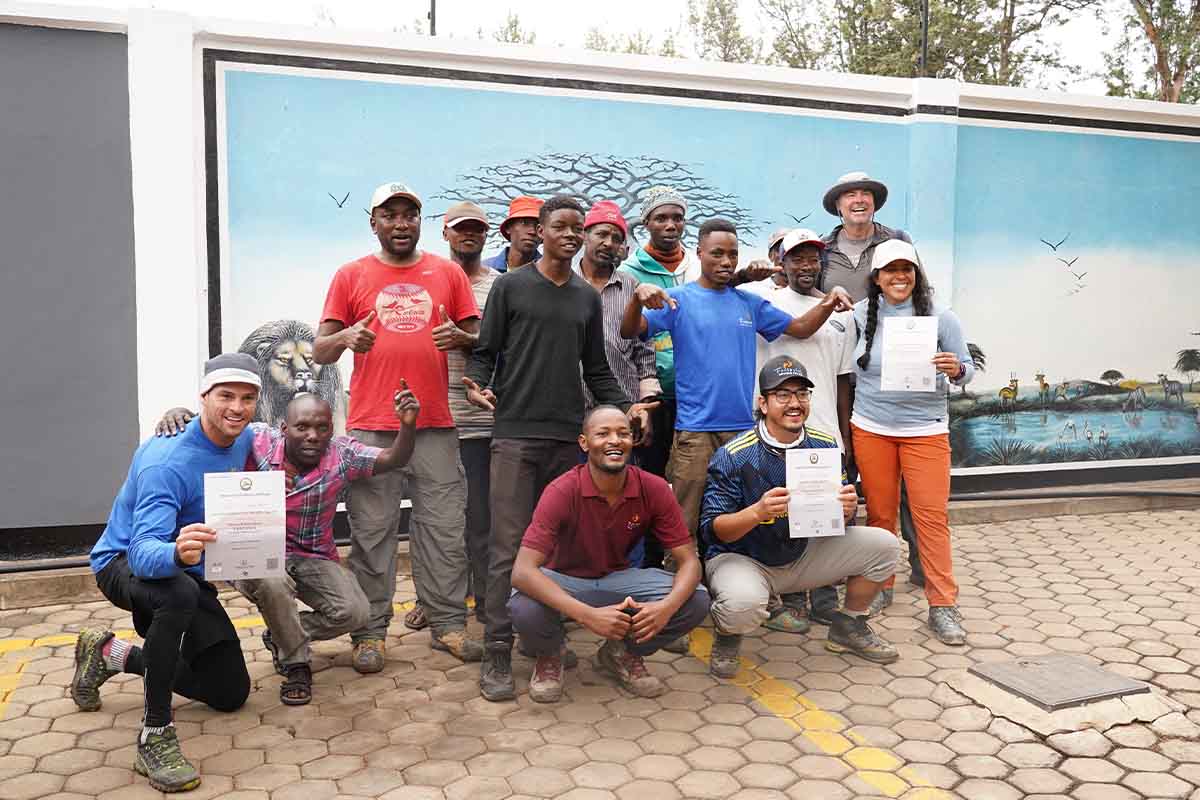
The team sets up and breaks down the camps each day before you reach, for a smooth and comfortable stay. Accommodation in Lemosho Route is generally tents, setup at selective campsites along the route. These tented camps offer basic facilities including toilets and dining tents.
Weather and Temperature Variations
The weather on Kilimanjaro can be very unpredictable and varies significantly with altitude. At lower altitude, you will experience warmer and you may experience rain in the rainforest habitat. As you climb higher, the temperatures drop and the climate becomes colder and drier.

However, the summit can be extremely cold, -7°C to -29°C. The wind chills make it even colder as you climb higher. So, layering is very important to stay warm and comfortable.
Spectacular Views and Unique Landmarks
- Throughout the Lemosho Route, you'll be treated to spectacular views and unique landmarks.
- The Shira Plateau offers panoramic views of the surrounding landscape and Mount Meru.
- The Lava Tower, a towering volcanic plug, is a popular landmark and acclimatization point. The Barranco Wall, a steep rock face, provides both a physical challenge and a sense of accomplishment upon reaching the top.
- The final ascent to Uhuru Peak rewards climbers with an unparalleled sense of achievement and breathtaking views of the glaciers, crater, and vast African plains.
Accommodation Options during Kilimanjaro Climbing via Lemosho Route
Kilimanjaro Via Lemosho Route is a camping-style climb where you cannot expect a hotel or guesthouse unlike lodges and teahouses during the Everest Base Camp Treks in the Himalayas.
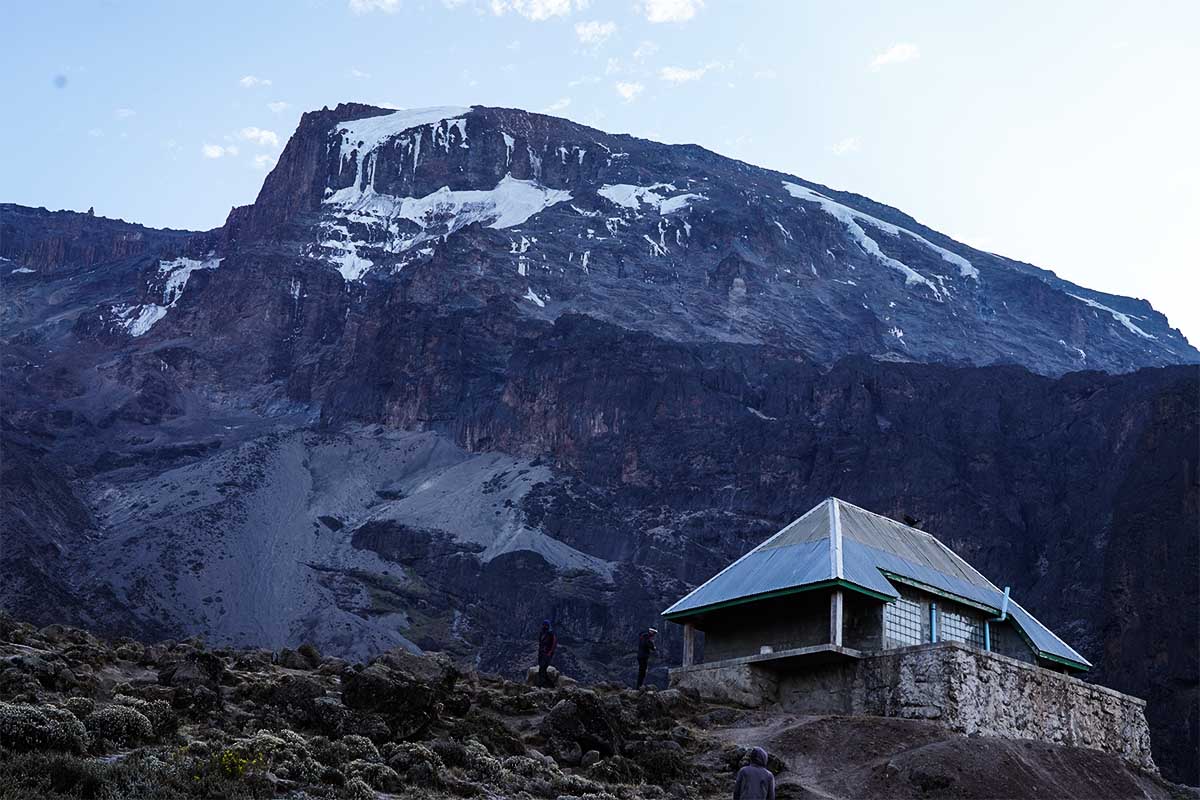
The accommodation options on the Lemosho Route are in tents, set up by the guide and porters at designated campsites. These campsites offer basic facilities, including toilets and dining tents where meals are served. Our team ensures that camps are set up and ready upon your arrival, providing a comfortable and organized experience.
The tents are typically two-person tents, offering a cozy and protected space to rest. Sleeping bags are provided to ensure a comfortable night's sleep despite the chilly temperatures. Some campsites may have basic long-drop toilets, while others use portable toilet tents for improved hygiene and convenience.
Facilities of Toilets during the Kilimanjaro Climbing via Lemosho Route
Toilet facilities on the Lemosho Route range from basic long-drop toilets to more modern portable toilet tents provided by the tour operators. Long-drop toilets are simple, pit-style latrines that can be found at some of the campsites along the route.
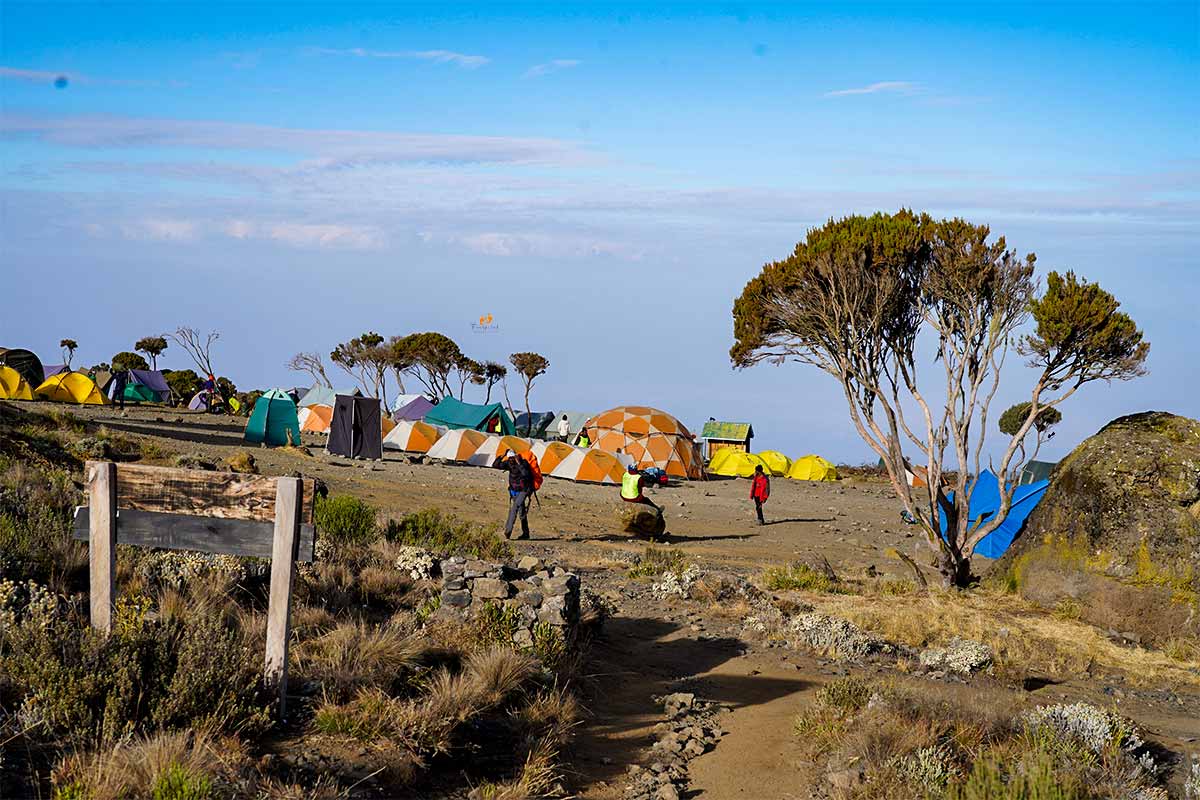
They are basic and often not very clean, making portable toilet tents a better option. Portable toilet tents offer a more hygienic and private alternative, with chemical toilets that are regularly cleaned and maintained by the support team. It is advisable to bring your own toilet paper and hand sanitizer, as these may not always be available. Using the provided facilities responsibly and practicing good hygiene will help maintain a clean and pleasant environment for everyone on the trek.
Is Travel Insurance Necessary for Lemosho Route Climbing Kilimanjaro?
Yes, travel insurance is very important when climbing Kilimanjaro via any route possible. High-altitude trekking, health problems, evacuation, trip cancellation, and loss of personal belongings should each be covered by comprehensive travel insurance.
Having travel insurance is very important due to the physical demands of the climb and the various dangers involved, including altitude sickness, injuries, and harsh weather conditions. Insurance can offer financial security and peace of mind in the event of a medical emergency or evacuation. It's crucial that you carefully look over the insurance coverage to make sure it addresses all the relevant risks and components of the hike. It's crucial to confirm the specifics with the insurance provider as some policies can need extra coverage for high-altitude treks.
Acute Mountain Sickness on the Lemosho Route
Acute Mountain Sickness (AMS) is a common condition that can affect trekkers ascending to high altitudes too quickly. AMS occurs due to reduced air pressure and lower oxygen levels at high elevations, which can impact the body’s ability to function properly.
Common symptoms of AMS include:
- Headaches
- Nausea and vomiting
- Dizziness
- Fatigue and weakness
- Shortness of breath
- Loss of appetite
- Difficulty sleeping
These symptoms typically occur a few hours after reaching a higher altitude and can vary in intensity from mild to severe.
Possibilities of Acute Mountain Sickness on the Lemosho Route
The Lemosho Route is designed to allow for gradual acclimatization, which helps reduce the risk of AMS. The route offers a longer ascent with more time at lower altitudes, which helps trekkers adjust more effectively to the thinning air.
Acclimatization Points on the Lemosho Route
Lava Tower (4,600 meters): Lava Tower is an important acclimatization stop along the Lemosho Route. Trekkers can face decreased oxygen levels in their body by ascending to this high altitude during the day. They stay here for a while before descending to a lower height to sleep.

"Climb high, sleep low" is the method that lowers the risk of acute mountain sickness (AMS) and improves acclimatization.
Barranco Camp (3,900 meters): Barranco Camp is another important acclimatization center for Kilimanjaro Climb via Lemosho Route. Trekkers come to this camp to rest and acclimate more after their stay at Lava Tower. The camp offers a chance to acclimate before the last push to higher altitudes. Resting overnight at Barranco Camp improves the body's adjustment to the altitude changes, resulting in safer and easier climbs the next day.
Prevention and Management of AMS
- To prevent and manage AMS on the Lemosho Route, consider the following tips:
- Gradual ascent is key. Take your time to allow your body to adjust to the altitude.
- Drink plenty of water to stay hydrated, as dehydration can worsen the symptoms of Altitude Sickness.
- Maintain a balanced diet and eat enough carbs to keep your energy levels up.
- Avoid Alcohol and Tobacco consumptions. These can disrupt your body’s ability to acclimatize.
- Consult your doctor about taking medications like acetazolamide (Diamox) to help prevent AMS.
- Pay close attention to how you feel. Communicate with your guide about possible symptoms immediately.
What to Do if Acute Mountain Sickness Occur
- Take breaks and avoid exerting yourself if you start to feel symptoms.
- If symptoms worsen or do not improve with rest, descend to a lower altitude immediately.
- In severe cases, seek medical assistance. Guides are trained to recognize AMS and will help facilitate a descent if necessary.
- Proper preparation, gradual ascent, and close attention to your body’s responses can help ensure a safe and successful climb on the Lemosho Route.
Conclusion
The Lemosho Route to Kilimanjaro offers a truly remarkable trekking experience, with the equal challenges of high-altitude climbing with the rewards of diverse landscapes and stunning scenery. From the lush rainforests at the starting point (Londorossi Gate) to the icy summit of Uhuru Peak, this route presents a dynamic scenery that keeps trekkers inspired and motivated.
With its gradual ascent, enough acclimatization opportunities, and high success rate, the Lemosho Route stands out as one of the best choices for climbers seeking to conquer Africa’s highest peak. Whether you are attracted by the breathtaking views, the rich biodiversity, the Lemosho Route promises a journey of a lifetime, leading up to an unforgettable achievement of reaching the roof of Africa. Proper preparation, physical fitness, and a focused mindset are key to a successful climb, ensuring that you make the most of this extraordinary adventure.
"Don't miss out on the upcoming peak season, book your Kilimanjaro adventure via the Lemosho Route with us.”
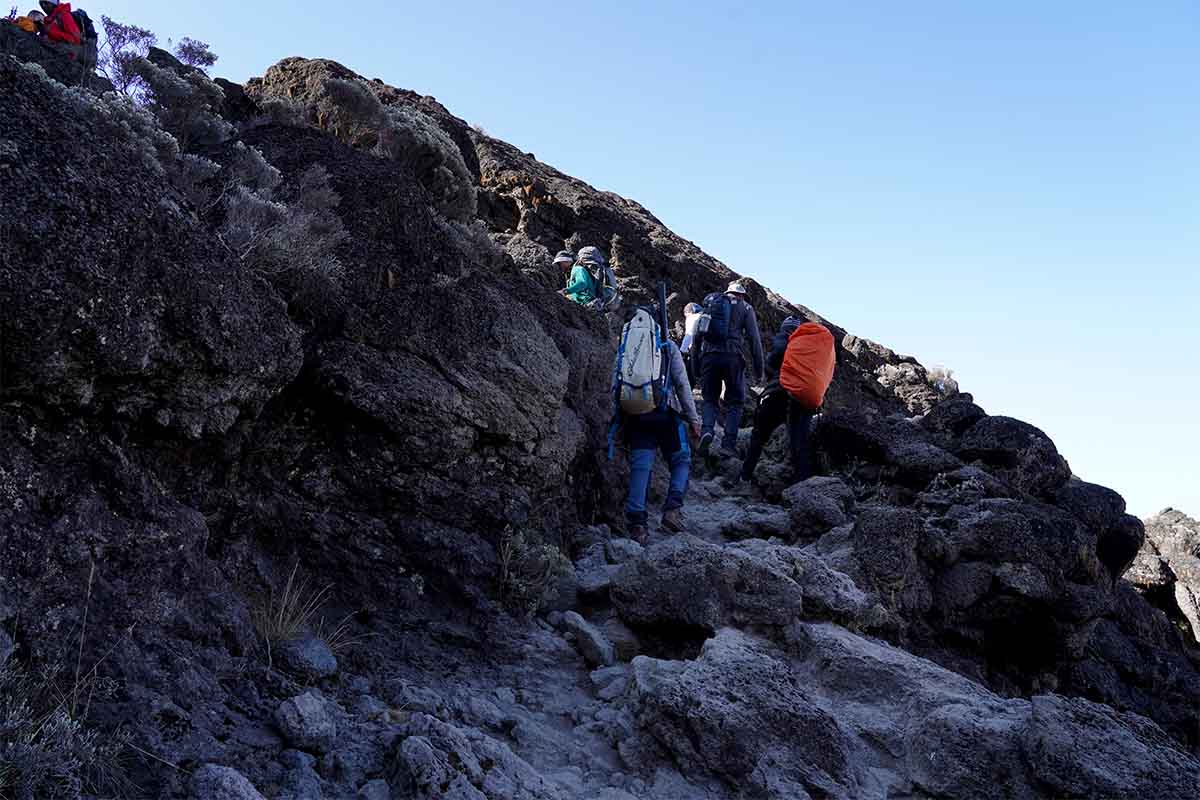






.jpg)







